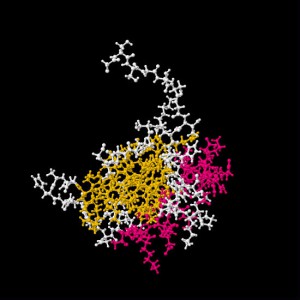Aberrant RNA binding protein (RBP) function has been implicated in a host of human diseases from various cancers, neurological disorders, and conditions related to muscular atrophy (1). Understanding RBP function requires not only a working knowledge of the protein proper, but accurate methods to identify RNA binding partners in vivo. Identification of RNA binding partners has historically been difficult, especially for RNA targets involved in nervous system disorders. Methods for finding targets have involved in vitro RNA selection or co-immunoprecipitation followed by gene chip analysis (2,3). These approaches came with some inhert limitations. The signal to noise ratio is low and the ability to differentiate between direct and indirect interactions is limited. Additionally, since the RNA-protein interactions are so complex, any of the in vitro methods may not be wholly predictive of true intracellular interactions.
In 2003, researchers at the Laboratory of Molecular Neuro-Oncology at Rockefeller University developed a method to purify protein-RNA complexes from mouse brain tissue that utilized ultraviolet cross-linking of RNA to their protein binding partners and immunoprecipitation of the cross-linked product (4). Further development of the technology has resulted in a streamlined protocol to perform high-throughput sequencing of RNA isolated by crosslinking immunoprecipitation (HITS-CLIP; 5).
The CLIPs portion of the method involves cross-linking cells in culture by irradiation followed by cell lysis. The lysate is then DNAse I and RNase A treated to remove any unbound nucleic acids. The cross-linked lysate is then applied to Dynabeads bound to a protein-specific antibody for immunoprecipitation. After immunoprecipitation, the bound RNA-protein complexes are alkaline phosphatase treated and both the 3’ and 5’ ends are modified (addition of a 3’ adaptor and a 5’ phosphate via polynucleotide kinase treatment). The product is then visualized using SDS-PAGE (6).
The HITS portion of the method involves purifying the visualized RNA followed by deep sequencing. Briefly, the bands are gel extracted, proteins removed via proteinase K digestion, and the RNA is purified. RL5 linkers are added to the 5’ phosphate using T4 RNA ligase. The ligated RNA is reverse transcribed, and the RT product is amplified using Solexa fusion primers and is ready for deep sequencing (6).
Although this type of analysis does not provide the exact location of RNA-protein binding (only within ~100bp or so), HITS-CLIP is a powerful, in vivo method to study the RBP and their interactions with RNA and microRNA in both healthy and diseased tissue. Data from this type of method can be used to generate genome-wide protein-RNA interaction maps which are important for a variety of diseases (7).
- Lukong, K.E. et al. 2008. RNA-binding proteins in human genetics disease. Trends in Genetics, 24, 416–25.
- Miyashiro, K.Y. et al. 2003. RNA Cargoes Associated with FMRP Reveal Deficits in Cellular Functioning in Fmr1 Null Mice. Neuron, 37, 417–31.
- Darnell, J.C. et al. 2001. Fragile X mental retardation protein targets G quartet mRNAs important for neuronal function. Cell, 107, 489–99.
- Ule, J. et al. 2003. CLIP Identifies nova-Regulated RNA Networks in the Brain. Science, 302, 1212–15.
- Licatalosi, D.D. et al. 2008. HITS-CLIP yields genome-wide insights into brain alternative RNA processing. Nature, 456, 464–70.
- Chi, S.W. et al. 2009. Aronaute HITS-CLIP method, Available online at http://ago.rockefeller.edu/Ago_HITS_CLIP_Protocol_June_2009.pdf. Access November 15, 2011.
- Thomson, D.W. et al. 2011. Experimental strategies for microRNA target identification. Nucleic Acids Research 39, 1–9.
admin
Latest posts by admin (see all)
- Safety First (and Sensitivity too!): Diamond™ Nucleic Acid Dye - August 7, 2013
- The Price for Convenience May Not Be That Pricey After All - April 12, 2013
- A New Edge in Bisulfite Conversion - February 20, 2013


I have nominated you for the award please have a look as given below;
http://myabsolutedreams.wordpress.com/wp-content/uploads/2011/11/20/the-liebster-blog-award/
Thank you
Regards,
Krishnaveni